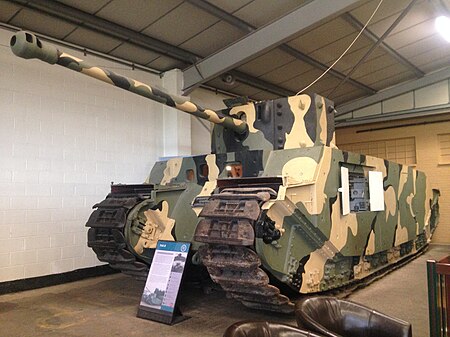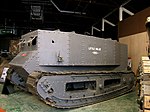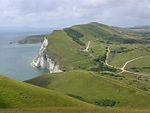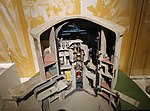TOG2
Abandoned military projects of the United KingdomHistory of the tankSuper-heavy tanksUse British English from September 2017World War II tanks of the United Kingdom

The TOG2, officially known as the Heavy Tank, TOG II, was a British super-heavy tank design produced during the early stages of World War II in the case that the battlefields of northern France devolved into a morass of mud, trenches and craters as had happened during World War I. When this did not happen the tank was deemed unnecessary and the project terminated. A development of the TOG I design, only a single prototype was built before its termination.
Excerpt from the Wikipedia article TOG2 (License: CC BY-SA 3.0, Authors, Images).TOG2
King George V Road,
Geographical coordinates (GPS) Address Phone number Website Nearby Places Show on map
Geographical coordinates (GPS)
| Latitude | Longitude |
|---|---|
| N 50.69553 ° | E -2.24371 ° |
Address
The Tank Museum
King George V Road
BH20 6JG , Wool
England, United Kingdom
Open on Google Maps









